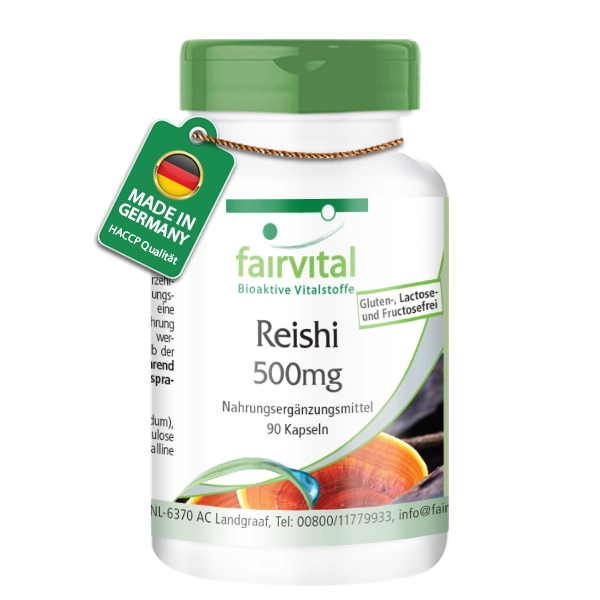
Omega-3 fatty acids: Interesting facts about EPA, DHA and ALA
Everyone is talking about omega-3 fatty acids, but what is behind the component of natural oils and fats? And are there differences between plant and animal omega-3 fatty acids?
In order for our body to be able to use these high-quality fatty acids, they have to be ingested through food. But which foods provide particularly large amounts of high-quality omega-3 fatty acids? For which bodily functions are they important? These questions - and a few more - are answered below.
What are omega-3 fatty acids?
Omega-3 fatty acids are unsaturated, partially essential fatty acids. The best known and most relevant omega-3 fatty acids for human nutrition are:
- Eicosapentaenoic acid (EPA)
- Docosahexaenoic acid (DHA)
- Alpha-linolenic acid (ALA)
What foods contain omega-3 fatty acids?
Omega-3 fatty acids are found in plant foods as well as animal foods.
Plant-based omega-3 fatty acid ALA (alpha-linolenic acid)
- Flaxseed
- Walnuts
- Chia seeds
- Chia oil
- Walnut oil
- Rapeseed oil
- Linseed oil
- Algae oil
- Perilla oil
Animal (marine) omega-3 fatty acids EPA (eicosapentaenoic acid) and DHA (docosahexaenoic acid)
- Oily fish
- Crustaceans
- Algae
- Krill
Differences between plant and animal (marine) fatty acids
- Omega-3 from marine animals (oily fish, fish oil, krill oil etc.) contains mainly
docosahexaenoic acid (DHA) and eicosapentaenoic acid (EPA), which have a long chain of carbon atoms.
carbon atoms.
- Omega-3 from plant sources (flaxseed, linseed oil, chia seeds, walnuts and green leafy vegetables), on the other hand, contains alpha-linolenic acid (ALA), with a slightly shorter chain of carbon atoms.
With the exception of algae, plants do not provide the long-chain omega-3 fatty acids EPA and DHA.
Many positive effects thanks to EPA, DHA and ALA
Omega-3 fatty acids fulfil important functions in our body and are therefore of great importance. They contribute to the maintenance of normal vision, normal brain function, normal blood cholesterol levels, normal blood pressure, normal triglyceride levels and normal heart function.
Recognising omega-3 deficiency
The valuable fish and vegetable oils are immensely important for both mental and physical health.
You can get a blood test from your doctor to determine your omega-3 index. This measures the percentage of the omega-3 fatty acids eicosapentaenoic and docosahexaenoic acid in the total fatty acid content of the blood. There are also omega-3 self-tests for home use. The so-called test kits usually contain a lancet to obtain a few drops of blood, a test card onto which the blood sample is dripped, and a return envelope with which the sample can be sent to a certified laboratory. The analysis can usually be viewed online within a few days.
Salmon and algae oil as omega-3 suppliers?
Salmon is often mentioned among the omega-3 rich fish species. But be careful, salmon comes mainly from large breeding farms and is raised there mainly on vegetable food. This results in a higher omega-6 content in these fish. It is better to go for wild salmon.
Ready-to-eat algae oil is becoming increasingly popular as a vegetable source of omega-3. This contains various edible oils and also pure algae oils. These are obtained from microalgae, not to be confused with the large algae from which, for example, sushi leaves are made. The microalgae are produced in special cultivation facilities and the omega-3 is extracted from the algae mass by means of a complex process. Those who do not like fish can therefore use algae oil as a vegetable alternative. Please note, however, that the oil is heat-sensitive and therefore only suitable for cold cooking. It can be wonderfully integrated into various dishes. Try preparing your salad with it!
Delicious Omega-3 Smoothie with Algae Oil - Recipe
Ingredients for 2 people
- 2 kiwis
- 1 banana
- 100 g strawberries
- 80 g spinach (frozen)
- 2 tbsp lemon juice
- 1 tbsp cocoa powder
- 1 tbsp algae oil
- 250 ml water
Preparation
1. defrost the spinach
2. peel the kiwis and bananas
3. remove the sepals from the strawberries and wash the fruits.
4. put all the ingredients, except for the seaweed oil, into a blender and blend to a homogeneous mixture.
process
5. add the algae oil and stir.
The smoothie is now ready to serve.
This quantity is enough for approx. 2 glasses with a capacity of 300 ml.
Have fun trying it out!



